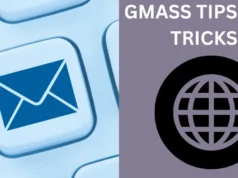email marketing best practices
Need of email marketing best practices Why you need the best email marketing tools ? Many email marketing services are available in the market today, but not all of them will suit your business. It would help to consider several factors before choosing an email service provider. Some elements are – budget, features, scalability, customer support, etc
- The 4 Basic Types of Email Marketing Solutions
- How to Choose the Best Email Marketing Service for You?
- Top 3 Best-in-the-Market Alternatives to Mailchimp
- Conclusion: Is your business missing out on the opportunity that comes with effective inbound and outbound campaigns? Let’s change that today!

The Four Basic Types of Email Marketing Solutions
Email marketing is one of the most important tools for any company. It is crucial to have an effective strategy if you want to reach your goals and get the most out of your marketing efforts. Just like with any type of business, there are different types of email marketing solutions that can be used in various ways. The four basic types are: –
Email marketing software – This type includes both self-hosted and hosted options. Email software is often browser-based or mobile-based, meaning it can be accessed from any device with an internet connection. –
Content curation – Content curation is a form of email marketing in which companies collect data about their target audience and then create emails with content that will interest them. –
Aut oresponders – Autoresponders are software that automatically send messages to customers and subscribers when they’re interested in certain content- based emails.
Email newsletter – An email newsletter is a regular, recurring email that sends out updates on company news and important announcements. Email marketing software is one of the most popular types of email marketing solutions because it’s easy to use, and available for any type of business. However, this type may be more expensive than other options because the software needs to Internet marketing
How to Choose the email marketing best practices for You?
Email marketing is one of the world’s most popular forms of marketing. Marketers use it to communicate with their audience and customers. Email marketing is also great for generating new leads and increasing conversion rates.
Consider your email service provider’s features and goals. This will help you decide which email service providers can fit your needs. For example, if you want to send mass mailings to many subscribers, you should consider email marketing software with that ability. If budget is not a concern for your company, then Voil.
Email marketing is a vital component of any company’s digital marketing strategy. Mostly, it is a low-cost and low-risk form of digital marketing that can produce high returns on investment. The 4 Basic Types of Email Marketing Solutions: 1. Sales & Market2. Relationship Marketing3. Product Marketing4. Content Marketing
There are a few secret email marketing tricks that can help you to drive conversions.
First, use the power of email campaigns. A well-written email campaign can convert even the most uninterested customer, and success is a clever copy, compelling CTA, and effective follow-up.
The second one – use an easy-to-understand layout! If you don’t have a design background, don’t worry! There are plenty of templates available for purchase. Make sure your message is clear and easy for the user to understand your offer.
Third rule – “less is more”! Don’t overwhelm yourself with fancy animations, webinars, or mailers because all this does is appeals to people who are already interested.
Top Three Best-in-the-Market Alternatives to Mailchimp
An email has been a popular marketing tool for a long time, and it has been proved to be one of the most effective ways to reach customers. But to be successful with email marketing, you need the right tools. . The following article will help you find the best email service provider for your business needs
In this blog post, we will talk about the top 3 best-in-the-market email marketing tools to help you leverage your email campaigns and make them more effective.
The first tool is MailChimp. It is a free email service provider that lets you send up to 12,000 emails monthly at no cost. MailChimp is free to start with any business.
The second tool is Constant Contact which provides sophisticated features like social media integration and customer relationship management (CRM). Constant Contact integrates social media into its service to get information about what people say about your brand in the marketplace and how they interact.
The third and final tool is SendGrid which offers professional services like webinars, webcasts, and integration with various applications.
Conclusion: Is your business missing out on the opportunity that comes with effective inbound and outbound campaigns? Let’s change that today!
This article concludes that inbound and outbound campaigns are an excellent opportunity for any business to bring in new customers, increase conversion rates, and get more from their marketing budget.
In addition to the traditional attributes like the subject, sender, and recipient, email marketing best practices is determined by its design, content, and how it is sent.
An email has been a powerful communication tool for a long time, and it can be used to send text messages or attachments such as PowerPoints. A well-designed email with interesting content will grab your audience’s attention and encourage them to read your message.
The flag signified that the email had been sent by a mailer program and automatically recognized as an automated message.
An email is flagged when it is detected as spam. It doesn’t mean that you need to delete the email. Instead, you will have to set ‘spam’ into your contact list, and you are good to go.












